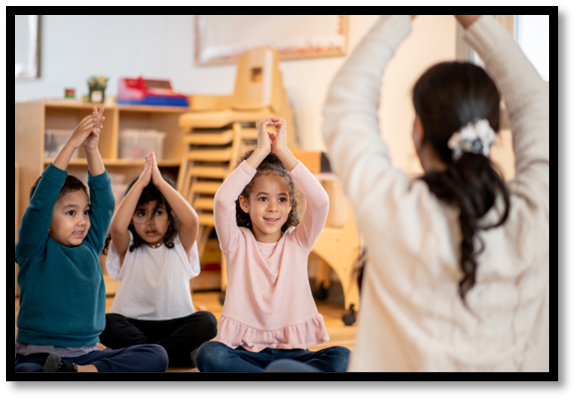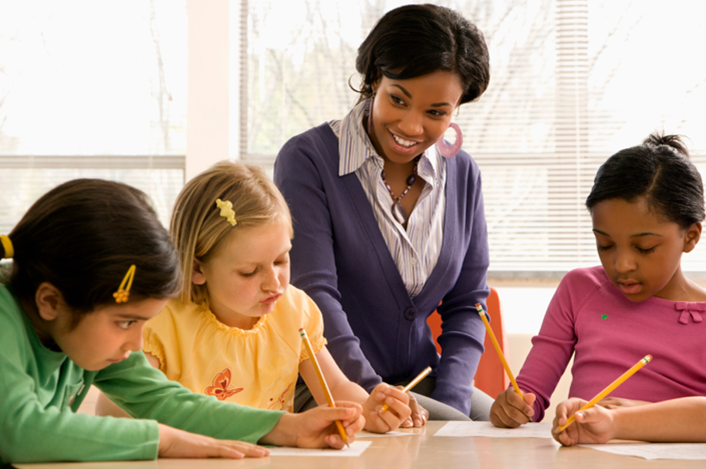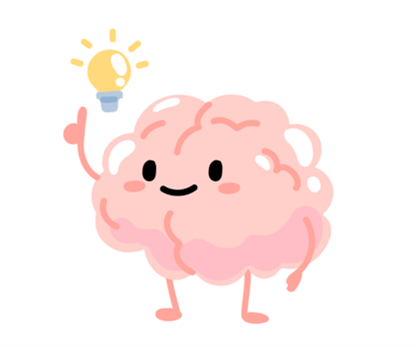
Jennifer M.: Good afternoon, and welcome. We are so glad that you could join us for The GrapeSEED Experience Webinar. I’m Jennifer McDonald, a former elementary school principal who implemented GrapeSEED in my building in preschool through first grade. I now have the privilege to manage the training and implementation team for GrapeSEED. Today, Janis Sanford and Kristy Dickinson are going to talk about their GrapeSEED experience at Springport Elementary. Janis Sanford, principal of Springport Elementary, utilizes the knowledge that she has gained during her 30 years of classroom experience, as well as administrative experience, to help further the knowledge in the fields about literacy. Janis strives to support her teachers by providing her teachers with professional development about best practices in literacy. She’s a former preschool and first grade teacher, and she understands the importance of early intervention. Janis has earned both a master’s in literacy instruction, as well as an educational specialist in administration. Kristy Dickinson has been a kindergarten teacher for 16 years. She’s taught GrapeSEED in her classroom for the last three years with great success. She advocates for literacy success for all children and works every day to build the oral language foundation of her students as a basis for reading and writing. Kristy motivates and engages students through her constant enthusiasm, enthusiasm and believes that good literacy instruction is the key to student success in reading and writing. During the webinar today if you have any questions, please feel free to type those into the question bar. We did put aside some time at the end to answer those questions. With that being said, I would like to introduce you to Janis and Kristy.
Janis Sanford: Hello.
Kristy D.: Hi, there.
Janis Sanford: We were exposed to the GrapeSEED program about four years ago when our county looked at it for the GSRP 2020 programs at the county level, and we do have a GSRP program in our building.
Janis Sanford: So we were very interested in it, and at the same time purchased a GrapeSEED, uh, license for our kindergarten. So that’s, that was our start. And there was a lot of training that went on which was very helpful, for all of our teachers and the pros in the GSPR programs.
Kristy D.: When we heard about GrapeSEED, I and another first grade teacher were sent to kind of a beginning talk to learn about it, and I have to be honest, at first I wasn’t quite sure that that, that was the avenue that we were ready to go down
Kristy D.: It seemed a little structured and I just walked away not quite sure. However, after that first year of getting exposed to it the structure is actually one of the pieces that is awesome. And I have really enjoyed being part of the GrapeSEED curriculum at our school.
Janis Sanford: I found that it was filling a need that we were seeing. We’re s-, seeing more and more students coming into kindergarten without strong oral language skills. They may not be English language learners, but they have not been exposed to rich conversation and stories and that type of thing.
Janis Sanford: So, we really found that GrapeSEED was filling that need for many of our students. Also, the students that were on say the high end of abilities, also absolutely love the program, and they love the singing, and we have adapted to meeting their needs with more independent activities too, when they don’t need, uh, the 20 exposures.
Kristy D.: Yeah, and that’s actually at first when I was exposed to that at the little, I don’t know, what you would call it, maybe the pitch about GrapeSEED, when I went to that I was with another first grade teacher who had been teaching for several years prior to me, and she said that it was a lot like going back from a lot of songs and learning through story and actions and activities.
Kristy D.: And I have a para-pro that works in my classroom who has been t-, in that job for a very long time, and every time she’s in my room during GrapeSEED, she says, “This is just like what we used to do.” And I think that makes it very highly engaging with the kids, they absolutely love it, from in the sense that we’re singing and we’re moving and we are engaging in some of those things that they just really maybe we had gotten kind of away from, and naturally learning those oral language goes through things that they love.
Janis Sanford: This is, uh, one of our preschools that is up on the screen now and everyone is involved. The para-pros, the teacher, I mean you can see that the kids are actively participating. And then on the other side, now is the kindergarten classroom.
Janis Sanford: We also use, uh, lessons five through 10 as, as an intervention in our first, first grade for the most part, and then some second grade students, that quite often have moved into the district that are still lacking some of those skills, and some of our, our students that just need extr time.
Kristy D.: And as a kindergarten teacher, I have had the opportunity to have a lot of students in my classroom that weren’t in those GSRP and preschool settings, so they were able to come in, and I’m going to give them units one through five as a second exposure again this year. And it’s amazing to see how much they’ve retained, their eyes light up when they realize that they are hearing something that they’ve heard before, their engagement in that is high. And, I, I really see a lot of successes with those kids that have had the exposure in preschool, against my students who this maybe their first exposure in school and what they’re retaining. But it, they, you know, really like it, and even at second year of getting 20 exposures again is very beneficial and has been fun to see how much they love it, even again after two years of it.
Kristy D.: These screens are showing some of the extension pieces of GrapeSEED, and the very best part of GrapeSEED that I love, is it wasn’t something that was given to me as a teacher, and I had to figure out on my own the best way to implement that. The professional development that goes along with GrapeSEED is phenomenal. We’re in our third or so year, because we started in the spring, and I still feel so supported in making sure that I’m the best GrapeSEED instructor that I can be. We’ve had trainings to see where we can take GrapeSEED out of the GrapeSEED timeframe that we teach and implement that into so many other parts of our day, whether that’s interactive writing other writers’ workshop even art that we have done and we connect some of the art projects that we do to poems, because it’s just so rich and so easily adapted into any of our day that we find ourselves using it beyond just our 40 minute GrapeSEED time.
Kristy D.: And so, some of these things are pieces that we have done, the bottom art project, adding that at using poems and changing language in there, and the kids absolutely love those parts. And we, we use it all the time. I just did a lesson yesterday with kids that goes with the book, and it talks about many things in their pockets, and so we did a writing about, “What would you keep in your pocket outside of the GrapeSEED time?” And it really lends itself well, and that was part of the professional development, that we didn’t have to just, even though easily we’re able to figure out how to incorporate it, if you were a very brand new teacher, like someone that we have today, they give that that time through professional development, to learn how to use it in other ways. Not to mention coming in as often as they do and giving you your immediate feedback, but GrapeSEED really lends itself well to all parts of the, of the day.
Kristy D.: And these are more pieces of art, and changing text through shared reading, and then I think the other one over there is an actual writing where they’re using that. Not to mention the books that are rich and the times we use those, uh, extensions that there are with the books and having those in our book boxes and using them often at different times, so very good. And we even have beehives, that’s in the display in our classroom, in our actual hallway, because again it lends itself. There’s a poem that we have, or that we do, and, and we were able to incorporate it into our art. So we really use it quite often.
Janis Sanford: And this is some of the data that I have collected for our DRA scores, we have 77% of all students exiting kindergarten at or above a four, which is the exit level. This year we were checking sight words and testing, and we were finding that kids were retaining the words much better than they used to. So 74% of all students knew 30 to 40 words in one classroom it was 100% of the students knew all 40 sight words. Another one was 91%. The one area where it was a little bit lower was we had to add a kindergarten teacher last year, and so she wasn’t able to get the training until December.
Janis Sanford: So that many students had all 40 words, but it made sense to me too that because they only had a half a year with their teacher using GrapeSEED. And then we test NWEA, and 87% of all students experienced a year or more of growth, also we raised our average mean. We have some kids that have no experience on a computer, so taking that computer test is challenging in itself, and just, but having all of this from GrapeSEED has helped, helped the mean at the end of the year. And this is all tied together with the, it fits well with the other aspects of our literacy program. We use Daily 5 and Café, even in kindergarten, and, and all of the students have guided reading lessons. What else would you add to that? And of course the writing. We had teachers trained in the soft units.
Kristy D.: Yeah, and and speaking to that data that’s there, it really was at the beginning of the year last year after another set of students, where it was, I was testing sight words, and having been a kindergarten teacher for a-, several years, it was evident to me that there was a huge growth in what sight word retention was, even at the beginning of the year for those students that had had preschool. And so, when looking at the data that’s what prompted us to kind of dig into it more, because I just knew that that was an increase. Honestly at the beginning of kindergarten, my sight word instruction is not the most important thing.
Kristy D.: I want them to come into those sight words kind of naturally through reading text and things. So I always expect that the data is going to be a little different, but or lower. However, it was higher, and on many of those students had had GrapeSEED instruction in preschool, and so we noticed that that was quite a difference. And I think just the exposure to good curriculum and content, has really helped with the DRA levels, and the students love those books. When we do, I pick for Daily 5, they want to get their hands on different GrapeSEED books, because we keep them in their book boxes. And, and that has really, just the availability of good curriculum, documents and things, to have resources, has been very helpful in increasing those things.
Jennifer M.: We did have a couple questions come in while you guys were talking. One asked about, “Is there a parent component? And what did the parents think about GrapeSEED?”
Kristy D.: There is in a piece of GrapeSEED where it ca-, you can have books and, and CDs that go home with the students. And I have to say the most often thing I get from my parents is, “What is GrapeSEED?” For us at Springport, we do not send our EEE facts home, we keep them in our classroom. We have used some of the DVDs as intervention piece, but I have a lot of parent questions about what is GrapeSEED, why are their children singing these songs over and over again and singing these things? So there is a parent component piece if we were to send those home. We, I have had the GrapeSEED DVDs used as an intervention, and all parents have been, uh, committed to the contracts that they’ve signed and have really utilized those in the engagement on the kids that have taken those home and just used them, has been much different. So, and much better.
Kristy D.: So there’s lot of success out of those students transferring what they’re seeing and then into the classroom. So there is a component with that, but quite often we’re just getting, “What are your k-, what are you singing in the classroom? What am I hearing my kids talking about?” And, you know, they really love it. I have a unique experience that my nephew is getting GrapeSEED instruction in young five in a different, different school district. So I get to hear my nephew, Lincoln, speaking about GrapeSEED as I would if I were a parent at home. And you know, that, I get to hear that. So I hear what they’re, when he’s singing the songs, I just get to make a connection. So, you know, we do get parent questions about that and it’s never a negative, it’s always just that they want to know what their kids are singing because it transfers out of our cla-, classroom.
Janis Sanford: And we have been expanding our, the take home part.
Kristy D.: Yeah.
Janis Sanford: That was, we were hesitant in the beginning, but we have been expanding that. And more parents are, are taking that h-, signing the contract …
Kristy D.: Yeah.
Janis Sanford: … and taking that home. We need to look at buying some portable, uh, DVD players.
Kristy D.: Yeah.
Janis Sanford: Because we have a population that doesn’t necessarily have them at home.
Kristy D.: Yeah.
Jennifer M.: Great. Another question that came in was about implementation. Kristy, was it easy to implement in the classroom?
Kristy D.: Absolutely, and the reason for that is because the professional development that was given to us prior to starting GrapeSEED was phenomenal. While a little scary, because you’re required to sing, so if that’s not your favorite thing to do, you have to try and get over that.
Kristy D.: But the, the instruction that we received on how to implement GrapeSEED was so amazing that we walked away from that three day, three day professional development and training and went immediately into our classrooms and were, and able to implement it. And with, with ease, and even though we just talked about unit one, unit two and unit three is very structured and able to, you know, be implemented the next day after training. It was very easy to implement, and still is after three years.
Jennifer M.: And, Janis, how about implementation in the whole building versus just the classroom, as an administrator, how did that go for you?
Janis Sanford: It’s gone very well. It’s, it’s, it’s, of course it’s a challenge when you change, uh, grade level, to have teachers changing grade levels, and we’ve had a little bit of that. We had one teacher that went to another district, so we h-, but the GrapeSEED people have been there to train the people that are going to be using the program.
Janis Sanford: We … It’s worked pretty well for the intervention, and some of our problem last year was getting someone hired as the interventionist, and that took us a little time. But then once she was onboard, and it’s going very well this year, to have that person start out the year with GrapeSEED. And I have a granddaughter that’s in the intervention group, and she’s just gaining so much confidence and believing that she can read, and I definitely attribute it in part to the GrapeSEED program.
Jennifer M.: Great. And then the last question is, what is your favorite thing about GrapeSEED?
Kristy D.: As a teacher, I love that my kids love that time of the day. Uh, it’s, it’s highly engaging, it’s very interactive. There is so much good, so many good resources there, and that even at the 20th exposure, when I’m thinking we’ve had e-, enough of it, the kids are still very much excited about it, and I just love how engaged they are and how much fun they are having while learning naturally through oral language.
Kristy D.: So, I, really I can’t say that there’s anything that I, I love every party of GrapeSEED. I’m a huge advocate for it, and have loved being, having it in my classroom these last three years.
Janis Sanford: I would say, I like the fact that it reaches all students regardless of their ability. They love the singing, the movement, the, the videos, all of it. They, it doesn’t matter if they are reading two years above grade level or if they’re struggling to form sentences, they enjoy the program and are learning from the program.
Janis Sanford: So I would say that’s probably one of the biggest positives about it. I have a grandson that is, e-, has been, was in the program for two years, was two years in kindergarten, is pretty gifted when it comes to reading, and he sings the songs, I’ll hear the songs in the car, and that type of thing, and he absolutely loves it. And it’s enjoyable to all kids.
Kristy D.: I would agree with that.
Janis Sanford: And that it’s making a difference in their ability to learn to read.
Jennifer M.: That is awesome. I would like to personally thank you both for sharing your experience and your story today about how GrapeSEED is being successful at Springport Elementary. And you both have shared to me, and I know you’ll, uh, agree with this, that you would love to have others come visit Springport and actually see it in action and see the teachers love for it and the students love for it. So I appreciate that.
Jennifer M.: We’d like to thank everybody for joining today, and please feel free to reach out to Springport, or reach out to GrapeSEED, if you would like to visit them or learn more. We appreciate it, and we hope everyone has a great Thanksgiving. Thanks again for joining.
Kristy D.: Thank you.
Janis Sanford: Thank you. And certainly come out to Springport anytime.
Kristy D.: Anytime.




Ready to Start Your Journey?

6425 Living Place
Suite 200 #1021
Pittsburgh, PA 15206
Tel: 800-449-8841
Email: contact.us@grapeseed.com
© 2024 GRAPESEED INTERNATIONAL PTE. LTD.
